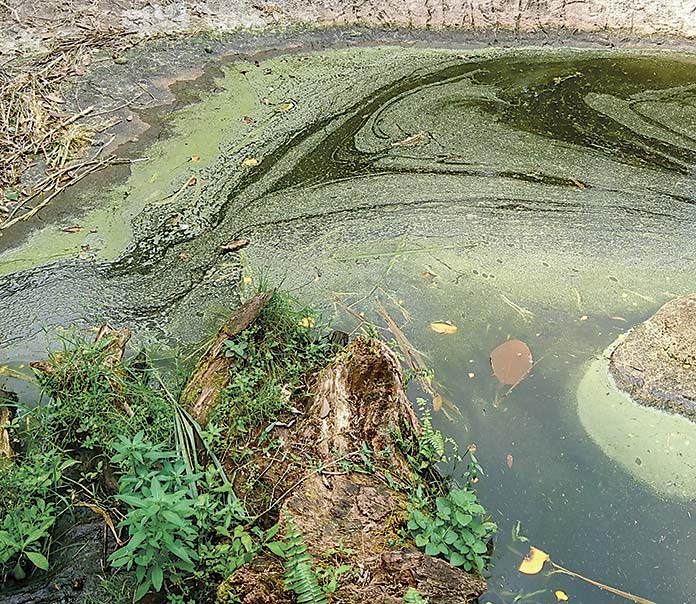At least one dog’s death from blue-green algae in Lake Allatoona and reports of dog fatalities in North Carolina and Texas have made the viral social media rounds, leading to a local caution for pet owners.
Hot summer weather brings the potential for the growth of algae blooms in bodies of water, and that water-borne plant does not mix with people or with family pets.
Although officials are not aware of any blue-green algae blooms (cyanobacteria) in any city waters, Peachtree City Engineer Dave Borkowski provided the following information from the Georgia Environmental Protection Division (EPD) to help prevent problems for pets and their owners that come into contact with harmful algal blooms (HABs).
The most serious health effects are caused by drinking or swimming in contaminated water. Skin irritation, vomiting and diarrhea are common symptoms for people and dogs.
Warm temperatures, still waters and plenty of sunlight can promote the growth of blooms that can range in color from blue-green, bright green, or red. When the bacteria blooms, it can look like foam, scum, or spilled paint and may give off a pungent or musty smell. Blooms can occur at any location within a lake or reservoir, but are most commonly reported near shorelines.
• If you see a bloom in a lake or reservoir, keep children and pets away from the water and limit recreational activities on the water.
• Avoid contact with the water that is discolored; do not swim or wade through algal scums.
• Do not drink, cook, or shower with untreated water from lakes, ponds, or streams.
• Do not drive your boat, water ski or jet ski through the bloom.
• Avoid exposure to irrigation water drawn from untreated sources.
• Do not fish from lakes, ponds, or rivers where algal scum is present.
• Do not allow pets or livestock to swim in or drink scummy water.
• If you or your animals come into contact with a blue-green algae bloom, wash with fresh water and soap after skin contact, and avoid swallowing or inhaling water. Wash animals’ fur thoroughly before allowing them to groom themselves.
• If you begin to exhibit any of the symptoms listed above, contact your healthcare provider and be sure to mention the possibility of exposure to algal toxins as you were in or around water.













Leave a Comment
You must be logged in to post a comment.